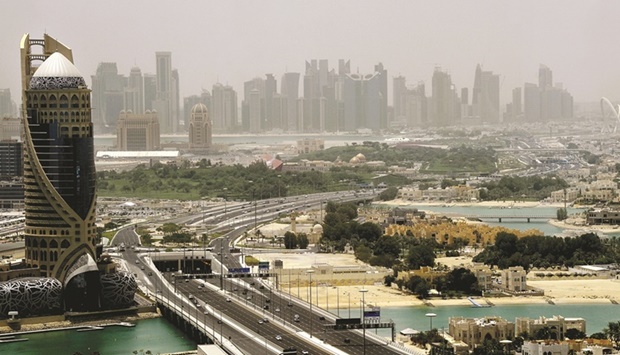Qatar is expected to record a fiscal balance of 8.6% of GDP this year and 8.8% in 2023, Oxford Economics has said in a report.
As for Qatar's current account, Oxford Economics said the country is expected to record a balance of 16.2% of its GDP this year and 14.3% in 2023.
Positive fiscal and current account balance indicate that the country's economy is in robust health. According to analysts, positive fiscal balance meant government's revenues exceed its expenditures, whereas the positive current account balance indicates that the nation is a net lender to the rest of the world.
The country's real GDP growth is expected to be 3.6% this year and 3.5% in 2023. Inflation will be nearly 3.9% this year and 2% in 2023, Oxford Economics noted.
As the US Federal Reserve continues its aggressive hiking cycle, all central banks across the Mena region have tightened monetary policy to tackle rising inflation.
Qatar Central Bank (QCB) announced on Wednesday it was raising the deposit rate 75 basis points to 3%, QNA said. It also raised the lending rate 50 basis points to 3.75%.
The central bank cited the evolving domestic and international macroeconomic developments as the reason behind the decision. It also increased the repo rate 75 basis points to 3.25%, the Qatari news agency said.
The UAE and Bahrain have hiked the most at 75bps, whereas Kuwait continues to be the least hawkish, only raising rates by 25bps.
“With inflation continuing to rise, we expect more rate hikes to follow later in the year,” Oxford Economics noted.
“Looking forward, we expect policymakers to continue on this tightening cycle until it is certain that inflation has begun to ease. Given the currency pegs to the US dollar, it is also important that policy rates do not fall too far out of step with the US Federal Reserve, which we expect to continue hiking until mid-2023.
Separately, a report by Cooper Fitch indicates that job creation grew 10% between first and second quarters (Q1 and Q2) this year in the UAE. This was the largest increase in the Gulf region, with Bahrain second at 9%, Oman at 6%, Qatar at 4%, and Saudi Arabia at 3%.
Kuwait's job market experienced a contraction of 2% between quarters, Oxford Economics noted.
Business / Business
Qatar may record fiscal balance of 8.6% of GDP this year, 8.8% in 2023: Oxford Economics

As for Qatar's current account, Oxford Economics said the country is expected to record a balance of 16.2% of its GDP this year and 14.3% in 2023

